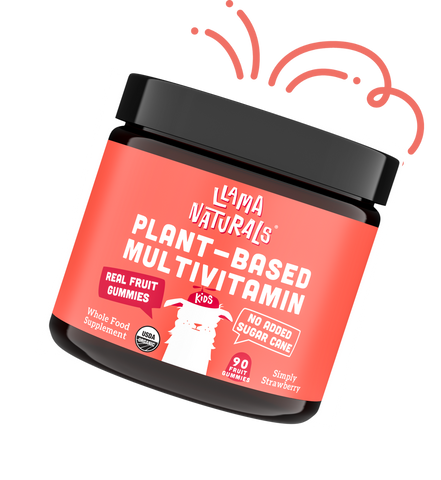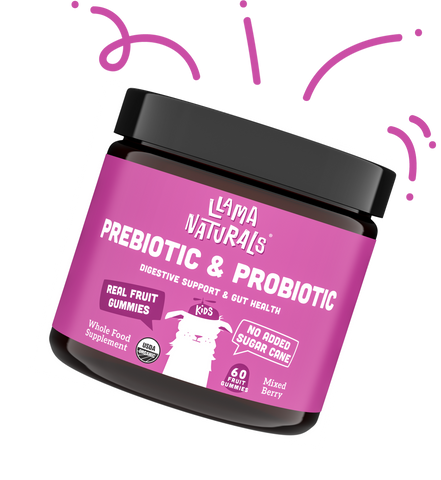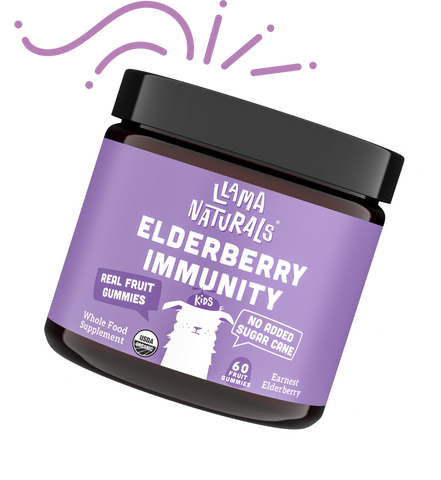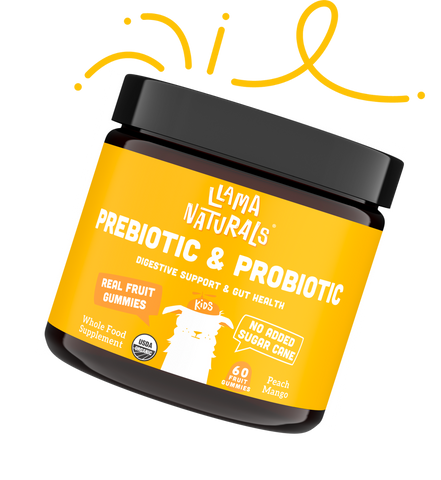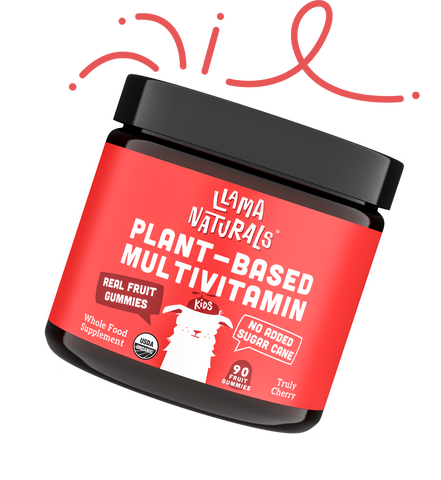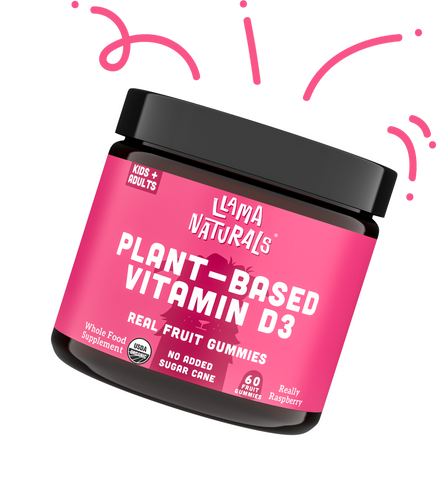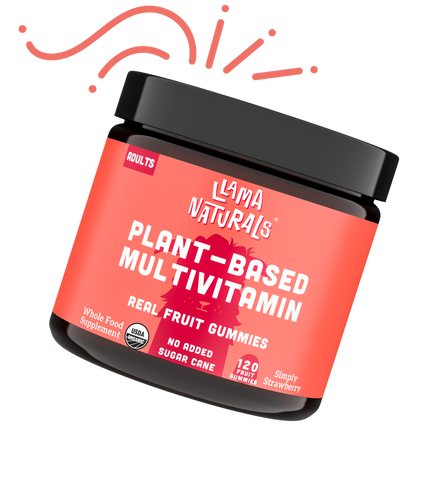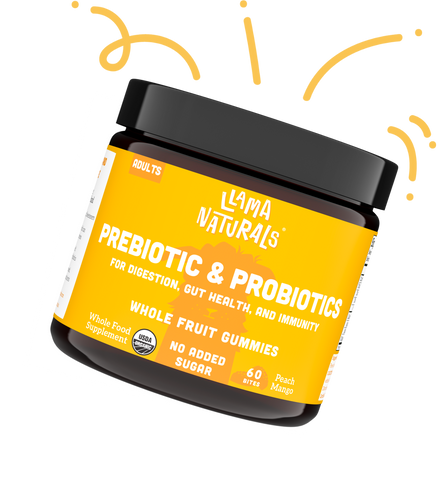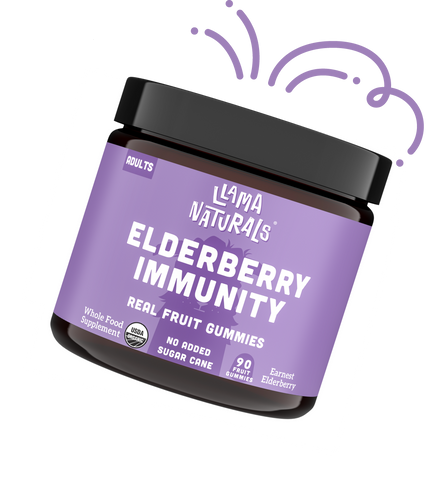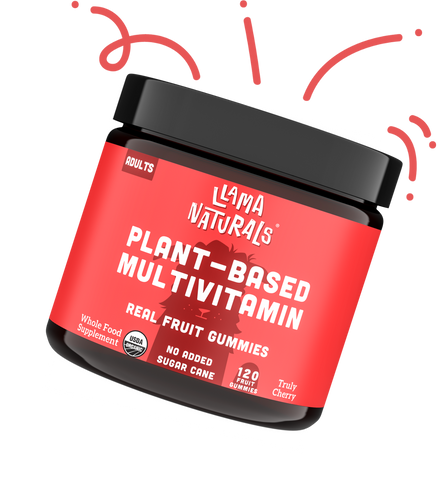Omega-3-6-9 Simplified: Everything You Need to Know
Key Points:
- Omega-3-6-9 fatty acids are crucial for your child’s wholesome growth and development.
- The Western diet is deficient in foods containing omega-3 fatty acids but unnecessarily high in omega-6 food sources.
- An imbalance in the omega-6 to omega-3 ratio may be detrimental to your child’s health.
- Supplements can help ensure your child gets enough essential fatty acids.

Omega-3-6-9 fatty acids help our bodies function the way they need to. From boosting brain health to maintaining healthy skin, these nutrients play crucial roles in the body. For this reason, it’s important to make sure your child gets the right amount of omega fatty acids.
But what do we know about these nutrients? In this post, we’ll explore omega-3-6-9 fatty acids — from their dietary sources to their benefits in the body. Keep reading to discover why they’re important and how to ensure your child doesn't miss out on these nutrients.
What Are Omega-3-6-9 Fatty Acids?
Fatty acids are the building blocks of fats. They’re made up of long chains of carbon and hydrogen atoms. They can either be unsaturated or saturated fats. Unsaturated fats have double bonds within their structure, while saturated fats lack double bonds.
Omega-3-6-9 fatty acids are all unsaturated fatty acids, meaning they have at least one double bond within their chemical structure.
The omega fatty acids are called so due to the position of the last double bond in the carbon chain. Omega(Ω) is the last letter of the Greek alphabet. The numbers three, six, and nine refer to the position of the first double bond from the end (omega) of the carbon chain.
Since fats are often considered unhealthy, you may wonder if (in some cases) fats can be good for your child. The answer is yes. In general, unsaturated fats such as omega-3-6-9 are healthier than saturated fats, especially for the heart.
But there’s a catch. The key to good nutrition is balance. Read on to learn the healthier way to incorporate fatty acids into your child’s diet.
Omega-3 Fatty Acids

Omega-3 fatty acids are important dietary fats with several health benefits. They are polyunsaturated fatty acids, meaning they have many double bonds.
The “3” refers to the position of the final double bond in the structure of omega-3 fatty acids. The final double bond is in the third carbon atom from the tail end of the chain.
Omega-3 fatty acids are “essential fats.” This means the body can’t produce them, and therefore, we need to get them from food sources.
There are three main forms of omega-3 fatty acids:
- Alpha-linoleic acid(ALA)
- Eicosapentaenoic acid(EPA)
- Docosahexaenoic acid(DHA)
The three forms of omega-3 fatty acids differ slightly in their structure and functions. For example, DHA is important in promoting brain health, EPA has anti-inflammatory properties, and ALA is good for the heart.
It’s important to understand the roles of each of the three forms of omega-3 fatty acids to know the correct food sources to use in your child’s meals and snacks. The body usually converts some ALA to EPA and DHA. However, you still need to get EPA and DHA from food or dietary supplements since only a small amount is converted.
Sources of Omega-3 Fatty Acids
Omega-3 fatty acids are derived from both plant and animal sources. Here’s where different types of omega-3 fatty acids come from:
- DHA: Salmon, sardines, mackerel, tuna, herring, caviar, anchovies, cod liver oil, krill oil
- ALA: Flaxseeds, chia seeds, hemp seeds, soybeans, walnuts, canola oil, mustard oil, flaxseed oil, soybean oil, avocados, tofu
- EPA: Tuna, mackerel, shellfish, sardines, herring, cod liver, whale blubber
There are also vegan sources of DHA and EPA. Different forms of algae such as seaweed, spirulina, chlorella, and nori are rich sources of EPA and DHA. This is where fish get their DHA and EPA, making them the "middle men" between the real source, which is algae, and delivering these nutrients to humans.
Health Benefits of Omega-3 Fatty Acids
Omega-3 fatty acids play important roles in the body because they:
- Promote brain health and cognitive development
- Improve heart health by preventing coronary heart diseases caused by cholesterol accumulation
- Take part in the formation of cell membranes
- Reduce inflammation
- Reduce the incidence of asthma attacks in children
- Help relieve symptoms of rheumatoid arthritis
- Reduce mental health symptoms of depression and ADHD
- Promote good quality sleep
- Promote hair growth and reduce hair loss
- Help with proper fetal development during pregnancy
Omega-6 Fatty Acids
Like omega-3s, omega-6 fatty acids are polyunsaturated essential fats. Their final double bond is located in position six from the tail end of the chain. Though omega-6 fatty acids offer many health benefits, research has shown that too much omega-6 in the body can be harmful to health. Excess omega-6 is linked to obesity, rheumatoid arthritis, and heart and liver diseases. The key to a healthy balance is to ensure that your child gets a good omega-3/omega-6 ratio.
Sources of Omega-6 Fatty Acids
Omega 6 fatty acids are predominantly found in vegetable oils. The sources of omega-6 fatty acids include:
- Evening primrose
- Safflower oil
- Soybean oil
- Corn oil
- Sesame seeds
- Walnuts
- Sunflower seeds
- Mayonnaise
Health Benefits of Omega-6 Fatty Acids
Omega-6 fatty acids are important in the diet because they:
- Reduce allergies
- Promote cardiovascular health by lowering LDL, the bad cholesterol
- May improve brain development
- Help in management of multiple sclerosis
- Reduce the risk of cancer
Omega-9 Fatty Acids

Unlike omega-3 and -6, omega-9 fatty acids are monounsaturated since they have only one double bond within their chemical structure. Omega-9 fatty acids are considered non-essential because our bodies can make omega-9 fatty acids from other unsaturated fats. However, we still need to consume them in our diet.
Sources of Omega-9 Fatty Acids
The dietary sources of omega-9 fatty acids include:
- Olive oil
- Avocado oil
- Almonds
- Sunflower oil
- Cashews
- Macadamia nuts
- Hazelnuts
Health Benefits of Omega-9 Fatty Acids
Omega-9 fatty acids are likely to be beneficial in:
- Improving memory in Alzheimer's patients
- Reducing inflammation
- Improving cardiovascular health since they lower LDL cholesterol
- Increasing insulin sensitivity, hence lowering the risk of diabetes
- Improving energy and mood
Fatty Acid Supplements for Kids
The best way to obtain essential fatty acids is through dietary fats. However, the typical Western diet is deficient in foods containing omega-3 fatty acids and high in omega-6 fatty acid food sources.
The omega-6/omega-3 ratio in the Western diet is presumed to be around 15:1 while a healthy ratio is lower than 4:1. As a result, your children are at risk of omega-3 fatty acid deficiency and an excess of omega-6.
This may affect them in two ways: They may either miss out on the amazing health benefits of omega-3s or suffer from the harmful effects of excess omega-6 fatty acids. So what’s the way forward?
Luckily, you don’t have to rely solely on diet to ensure your child gets enough omega-3 fatty acids. Omega-3 supplements may help boost your child’s intake. But, are they safe for kids, and are there any potential side effects?
Experts consider omega-3 supplements safe for kids, with only mild side effects. Still, you should always consult your pediatrician before giving your child supplements. Currently, studies are exploring the usefulness of omega-3 supplements in managing childhood disorders such as ADHD.
Fish or krill oil-based omega-3 supplements are the most common, but there are also vegan options. Personally, at Llama Naturals, we prefer these vegan choices. Combined omega-3-6-9 supplements formulated in a healthy ratio are also available. However, since your child is likely already getting enough omega-6 from the diet, and the body can produce omega-9, add omega-3 supplements if you think your child isn’t getting enough from their diet.
Note that the FDA regulates dietary supplements less strictly than food and prescription drugs. Because of this, only get high-quality supplements from credible suppliers and read the product labels carefully.
Some potential side effects of omega-3 supplements include:
- Nausea
- Diarrhea
- Headache
- Heartburn
- Bad breath
- Bad-smelling sweat
- Unpleasant taste
The side effects of omega-3 fatty acids are generally mild. All in all, the value of any nutrient lies in optimization and balance. As wild as it sounds, some parents may be tempted to give their kids large doses of omega-3 supplements to supercharge their school performance.
But it doesn’t work like that. Your child needs just the right amount. Higher concentrations of omega-3 fatty acids in the body magnify the possibility of experiencing serious side effects.
Disclaimer: Consult your healthcare provider for medical advice before using omega-3 supplements or in cases of severe side effects.
Ensure Your Child Gets Enough Omega-3-6-9 Fatty Acids

Omega 3-6-9 fatty acids are important for your child's wholesome development and general health. The good news is that you can get these fatty acids from dietary sources. The bad news, the standard Western diet is high in omega-6 and low in omega-3, something that might trigger certain diseases.
So what's the best way to ensure that your kids are not missing out on these vital nutrients? Omega-3 supplements can boost your children’s levels of these fatty acids and help them establish a healthy omega-3/omega-6 ratio.
For healthy, plant-based, natural supplements, consider Llama Naturals. Our plant-based gummy vitamins are made from real fruit and vegetables with no added sugar. We also ensure no artificial colors, flavors, gluten, or other allergens go into our products to give your family the quality they deserve. Yet, they still taste great.
Your child will love the delicious taste of our whole fruit gummies. Choose Llama Naturals for the perfect balance of healthy and tasty.
Llama Naturals is a plant-based nutrition brand that has created the World's First Whole Fruit Gummy Vitamins that are made with no added sugar and whole-food vitamins. They are USDA Organic, Vegan, Gluten-Free, free of common allergens, and are slow-cooked on low heat to retain rich phytonutrients & fruit flavor. It’s a win-win gummy vitamin that you and the family will love.

